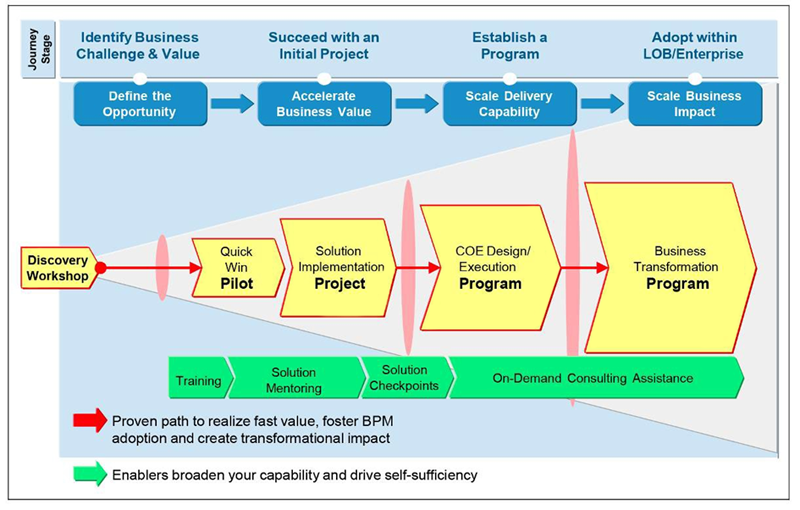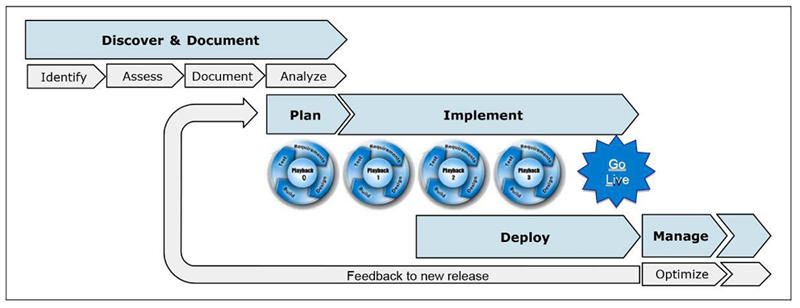Introduction
The promise of BPM is business agility. Business agility is important in a climate of constant change. Changes come from different sources both internal and external to your company, including changes in the market, customers, competitors, climate, politics, and regulations. A successful organization is one that is empowered with the agility to respond to change.
Business agility can be achieved by maintaining a constant focus on business value. The value proposition must be self-evident in every decision, from planning a project to managing a BPM project/program. If there is no measurable business value in an activity, stop doing it. The value you seek should also be in close alignment and traceable to corporate objectives.
As with process discovery, successful project planning depends on a cultural transformation in your organization. This cultural change takes time and you should set an expectation within your organization that the project-to-program journey takes at least 2 years and could take as many as 5 years. This transformation leads you from your current state to a future state, where BPM project success is repeatable and not dependent upon individual contributors.
A successful project-to-program transformation means that you demonstrated repeatable success in project planning. It means that you have a BPM program governing project selection, and that you are consistently delivering business value by ensuring your organization is working on the right projects at the right time. Your program provides continuous education and skills development of your people, further empowering the spread of BPM project success throughout your organization. The barrier between IT and operational business has all but disappeared and remains only for purposes of separation of duty. IT participants can easily trace their daily work to corporate business objectives and can describe the business value that results from their effort.

After discovery of a business process reaches a reasonable level of maturity (in Agile Software Development, you never stop iterating with discovery and documentation), the process is ready for you to start planning for implementation. Prioritization, scope, scheduling, and team structure discussions begin and a project is formally started.
The Planning phase in the lifecycle of a process in BPM (Fig. 2.1/2) starts toward the end of Discovery after deciding to proceed with initial implementation. Project planning takes place over a period of weeks during Playback 0 and typically culminates with Playback 1. Planning activities continue throughout the iterative process of implementation.

